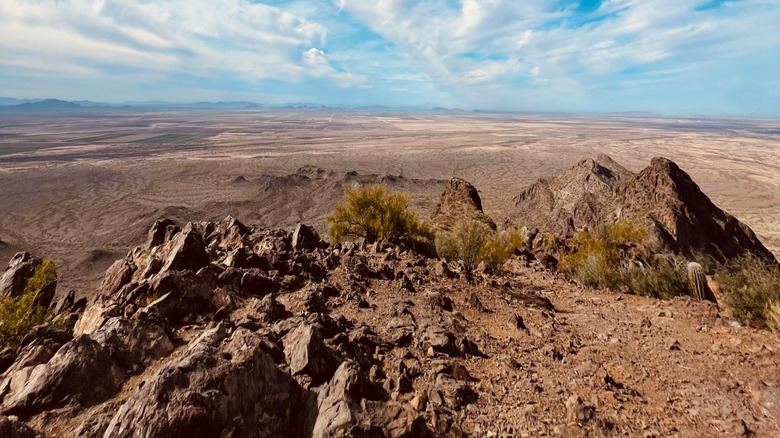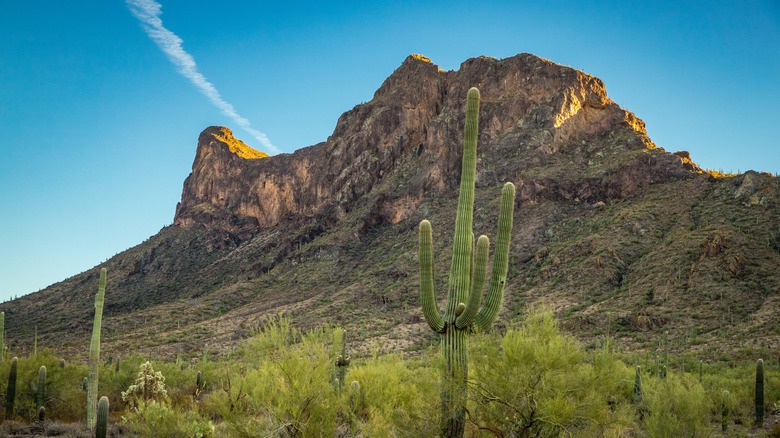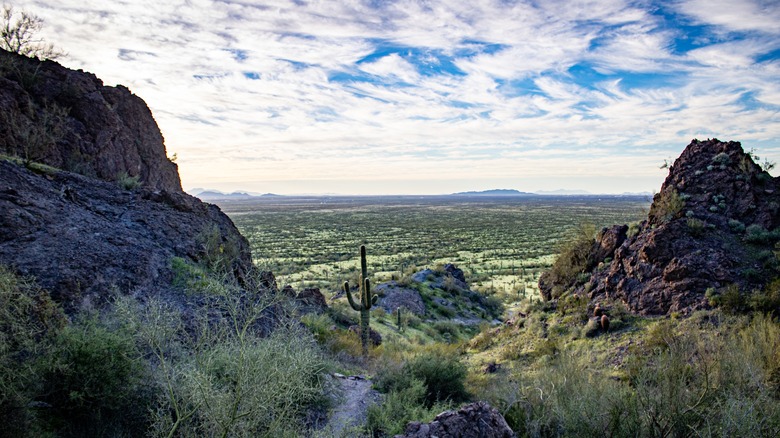Situated Between Phoenix And Tucson Is One Of Arizona's Most Famously Difficult Trails With Renowned Views
The rugged states of the American West all have their own challenging, technical hiking trails, but Arizona often takes this to a whole new level. While the Grand Canyon State generally lacks the snow-capped mountains of Colorado or the immense forests of California, it makes up for it with an iridescent desert landscape and many of America's most spectacular natural wonders. Both the North and South Rims of Arizona's iconic Grand Canyon are scenic hiking destinations, while cities like Sedona are surrounded by one-of-a-kind national forest sites that look like they come from another planet.
However, one of Arizona's most storied trails is not in a national park site at all. Rather, it lies within a state park situated between Arizona's two largest cities. Though the Hunter Trail at Picacho Peak State Park is not the state's longest or highest-elevation hike, its complex challenges and dazzling desert scenery make it the perfect representative of why Arizona is on many people's hiking bucket lists.
On paper, the Hunter Trail looks fairly accessible. After all, the trail is relatively short and sits just off an interstate highway. But don't let this fool you; the Hunter Trail is not for the faint of heart. The trail may lack length and elevation gain but has plenty of difficult terrain, steep climbs, and potentially dangerous desert conditions. But for experienced and prepared hikers who want to test their mettle, Picacho Peak's Hunter Trail is an essential stop on any Arizona hiking tour. And if you can meet the trail's many challenges, you'll be rewarded with awe-inspiring views that match any in Arizona.
What makes the Hunter Trail so challenging?
At first, Picacho Peak's Hunter Trail seems like a mere 2.8 mile, out-and-back route with a total elevation gain of 2,112 feet. Formidable, yes, but not something to worry too much about. Even the trail's terminus at the Picacho Peak summit doesn't seem too extreme on paper. Picacho Peak is around 3,374 feet high, putting it behind at least 2,500 other mountains on the ranking of Arizona's highest summits. But once you set foot on the trail, you'll quickly realize that a 3,000-foot ascent plus a trail shorter than 3 miles equals a less-than-forgiving hike.
Picacho Peak is the byproduct of millions of years of volcanic activity, geological uplift, and complex mineralization that defined Arizona's landscape. While this makes the mountain a geological marvel, it also means hikers will have to traverse some of the state's most unforgiving landscapes. True to the mountain's fiery origins, the ascent to the Picacho Peak summit involves steep climbs and highly challenging terrain.
During the nearly 3 miles up the mountain, you'll often have to tough your way up steep rock faces or scramble over uneven rocky ground. Some parts of the Hunter Trail — like the infamous Saddle area — feature installed cables that you'll need to use to get through the complex hazards across the mountain's slopes. With so many steep sections and hazardous terrain, injuries are a major risk. And we haven't even mentioned the weather yet! Picacho Peak State Park sits in the heart of Southern Arizona's Sonoran Desert, where daytime temperatures regularly reach triple digits in the summer. As a result, heat-related illnesses are a major hazard for hikers who don't bring adequate hydration.
The views from Picacho Peak
There's a reason the Hunter Trail remains so popular despite its difficulties. As the most prominent landmark in the area, Picacho Peak offers exceptional views of the surrounding miles of bright red Arizona desert. With its heavenly views and enchanting desert scenery, the Hunter Trail deserves to be mentioned alongside more famous Arizona bucket list hikes, like the trek to the iconic Havasu Falls. And if you're a history buff, you can take a diversion from your hike to visit the site of the 1862 Battle of Picacho Pass, the westernmost battle of the American Civil War.
For all of Hunter Trail's extraordinary mountain views, Picacho Peak State Park also displays the rare desert plant life that makes the Sonoran Desert such a remarkable destination. Most notably, the Hunter Trail takes you directly past countless saguaro cacti, the same species of towering cactus that features prominently in Arizona's underrated desert gem of Saguaro National Park. In the spring (when conditions are right), Picacho Peak State Park sometimes erupts in a scintillating display of wildflowers. If you're lucky enough to visit during peak bloom, these wildflowers provide an unforgettable backdrop to the challenges and triumphs of the Hunter Trail.
Thanks to the I-10 highway, Picacho Peak State Park is only around a 40-minute drive from Tucson and about one hour from Phoenix. The park also includes both RV and tent camping, with reservations ranging from $25 to $50 per night, depending on the location and time of year. Of course, being within an hour of both Phoenix and Tucson, you can also enjoy a more comfortable hotel (and air conditioning) to reward yourself after a triumphant ascent to the Picacho Peak summit.


